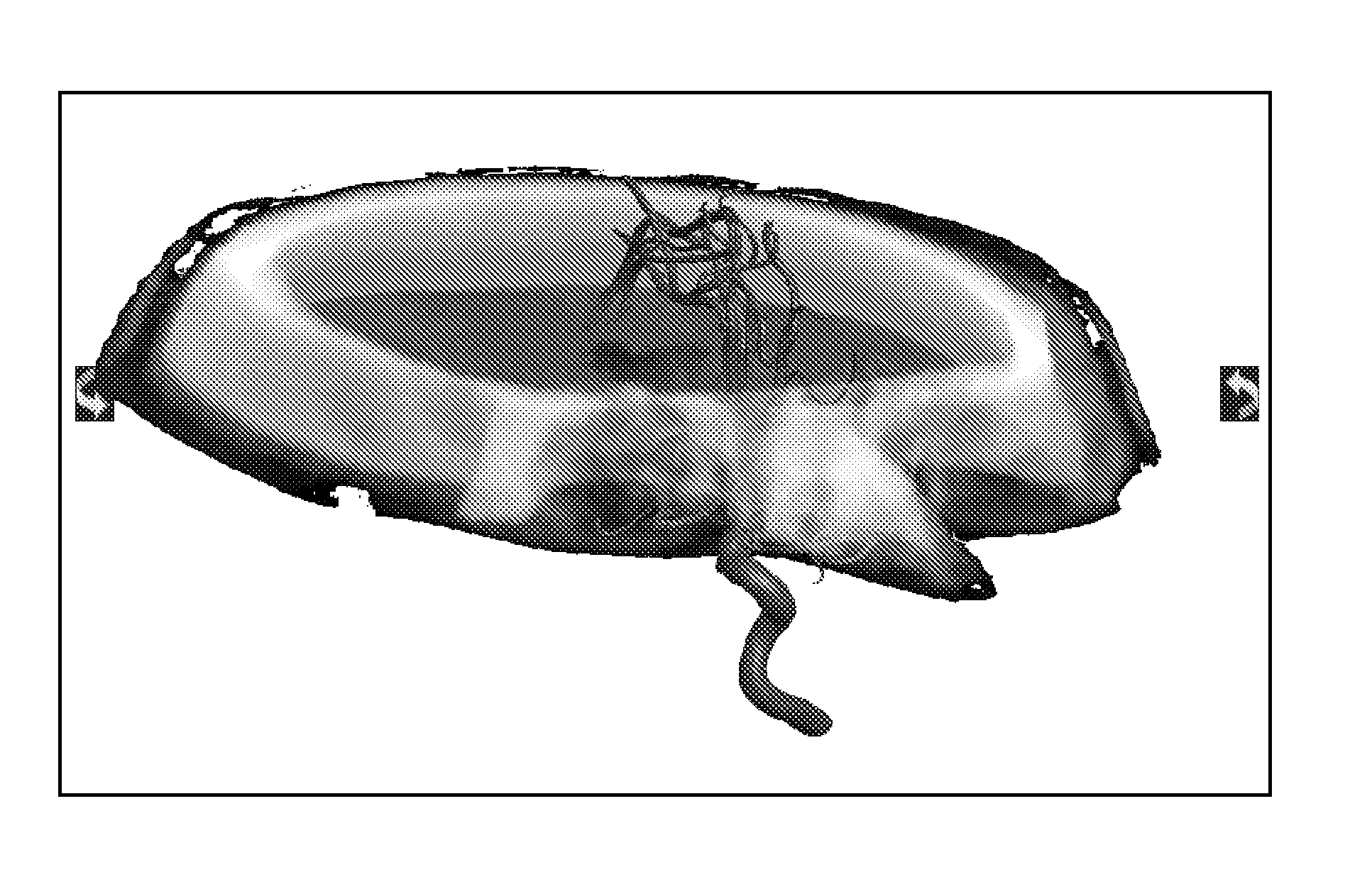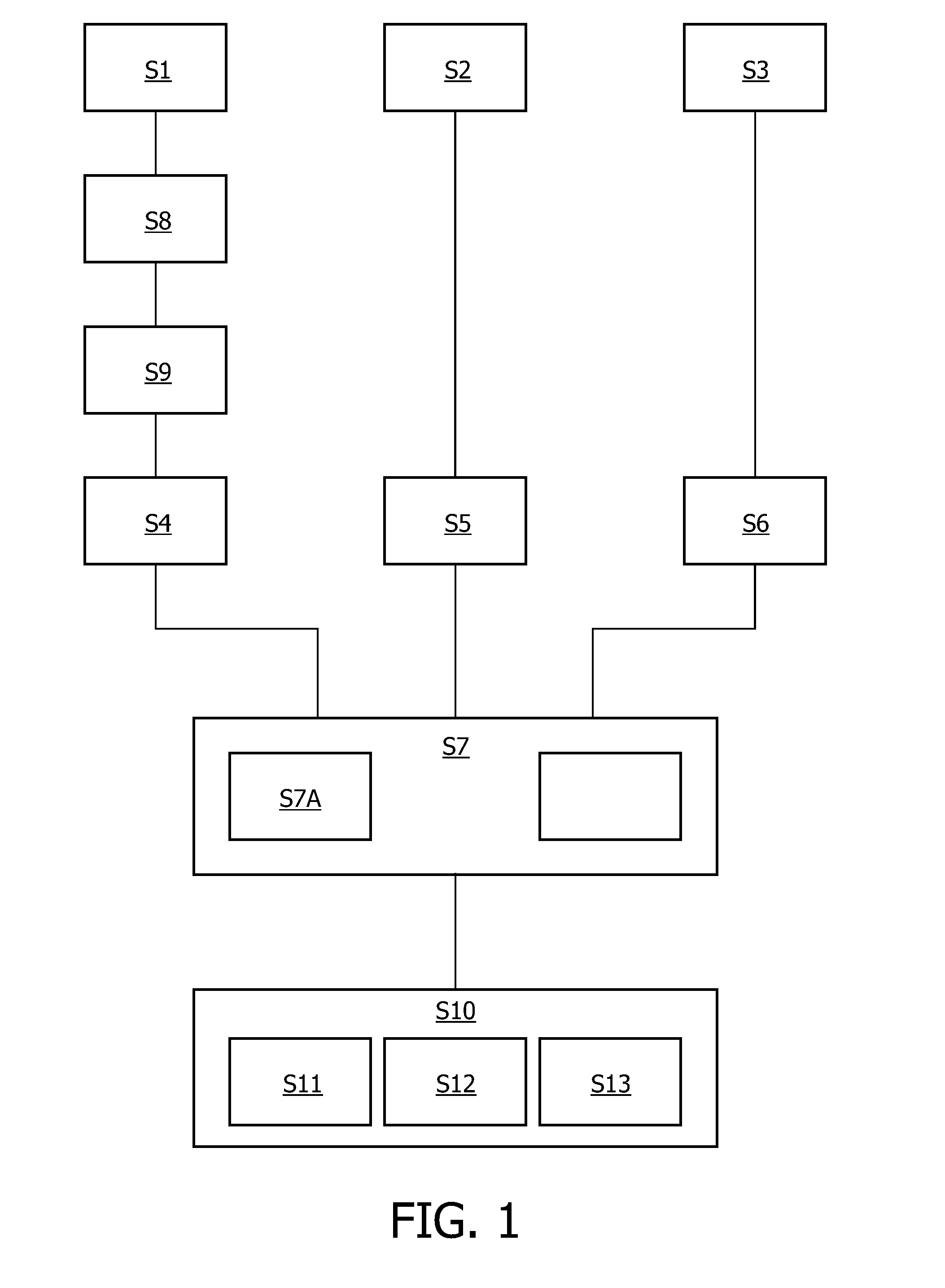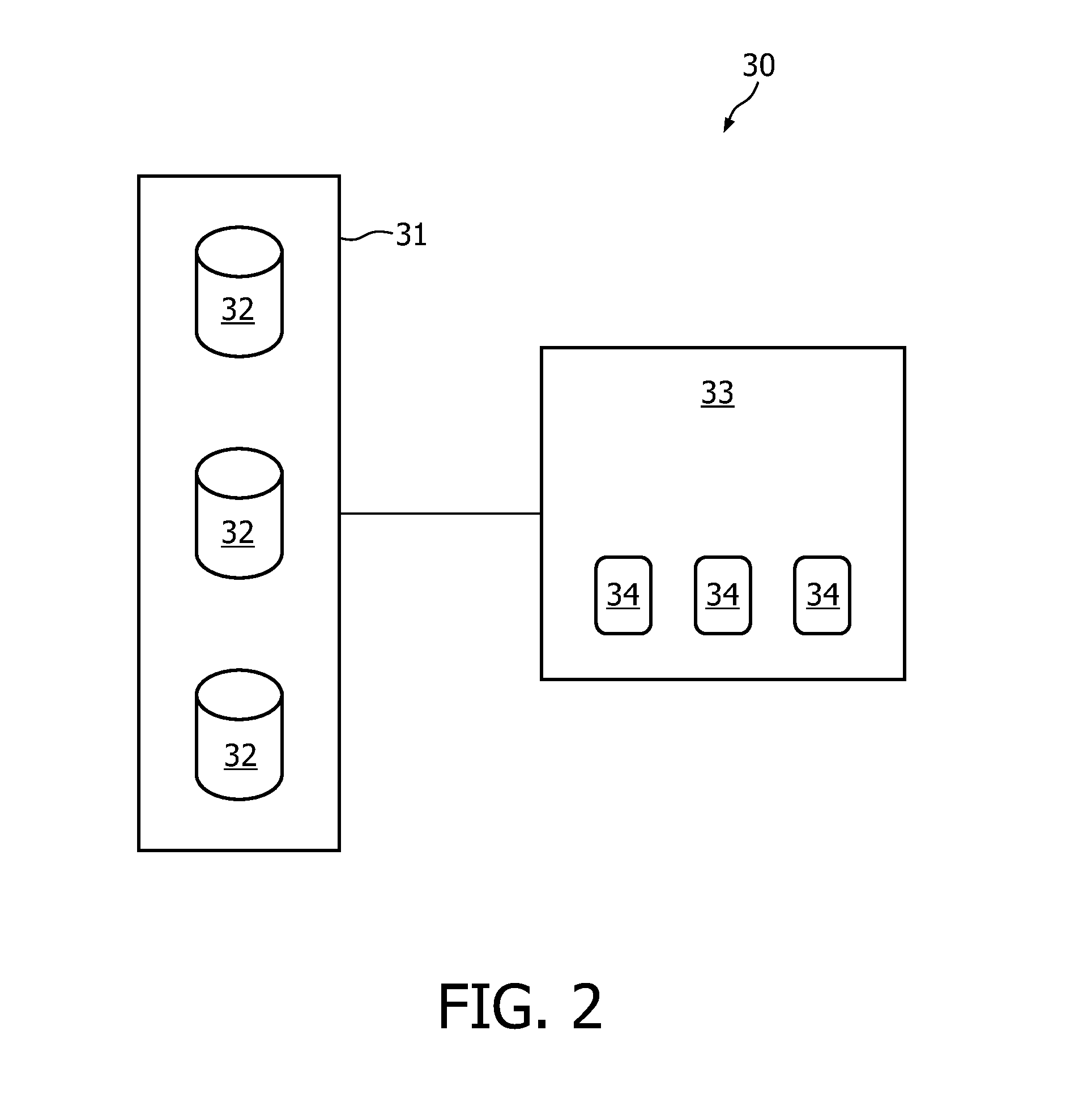Fused perfusion and functional 3D rotational angiography rendering
a technology of perfusion and rotation angiography, applied in the field of system and method for rendering images/views of anatomical structures, can solve the problems of unsatisfactory presentation mode and the inability of a clinician to interpret the 3d morphology of a vessel
- Summary
- Abstract
- Description
- Claims
- Application Information
AI Technical Summary
Benefits of technology
Problems solved by technology
Method used
Image
Examples
Embodiment Construction
[0048]FIG. 1 shows a flow chart of a method according to an exemplary embodiment of the present invention. The method comprises obtaining a 3D rotational angiography data set of an anatomical structure S1, obtaining a physiologic data set relating to a physiologic parameter with respect to the anatomic structure S2, generating a first image that includes the anatomical structure and is derived from the 3D rotational angiography data set S4, generating a second image that includes the physiologic parameter and is derived from the physiologic data set S5, and registering the first image and the second image S7. Further, the method may comprise obtaining a diagnostic data set relating to an anatomical region S3 and generating a third image that includes the anatomical region and is derived from the diagnostic data set S6.
[0049]The generated images of the anatomical structure and the physiologic parameter, and optionally of the anatomical region are registered S7, S7a. Registering means...
PUM
 Login to View More
Login to View More Abstract
Description
Claims
Application Information
 Login to View More
Login to View More - R&D
- Intellectual Property
- Life Sciences
- Materials
- Tech Scout
- Unparalleled Data Quality
- Higher Quality Content
- 60% Fewer Hallucinations
Browse by: Latest US Patents, China's latest patents, Technical Efficacy Thesaurus, Application Domain, Technology Topic, Popular Technical Reports.
© 2025 PatSnap. All rights reserved.Legal|Privacy policy|Modern Slavery Act Transparency Statement|Sitemap|About US| Contact US: help@patsnap.com



